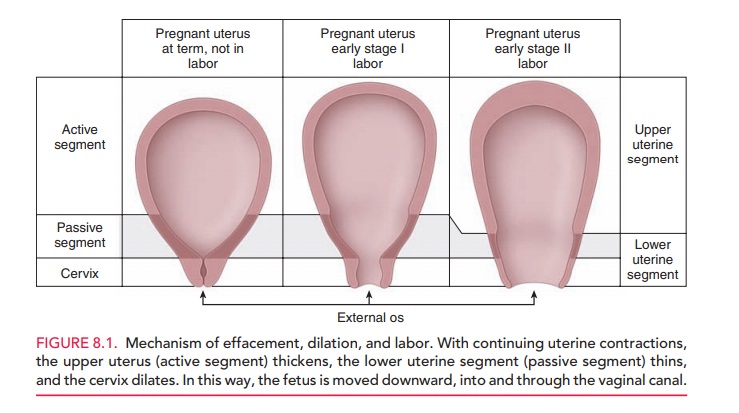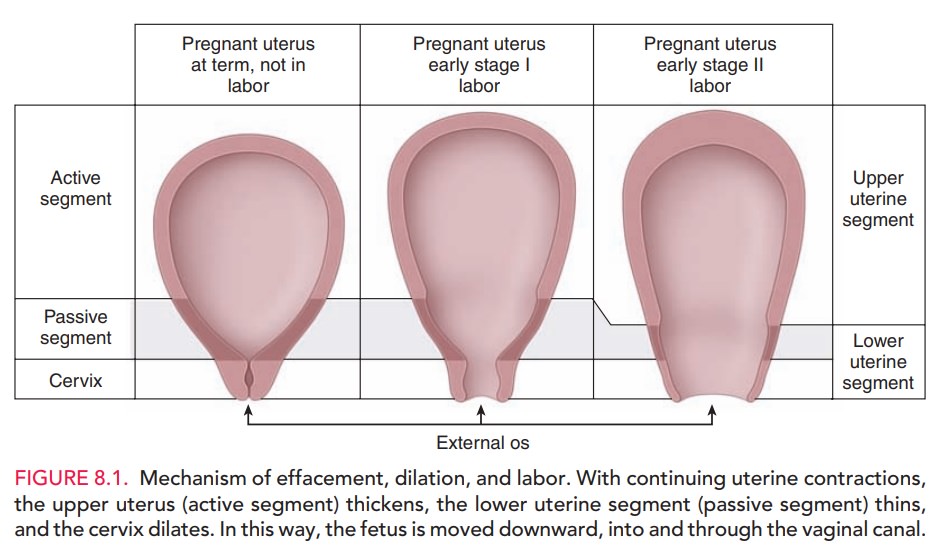Chapter: Obstetrics and Gynecology: Intrapartum Care
Maternal Changes Before the onset of Labor

MATERNAL CHANGES BEFORE THE ONSET OF LABOR
As patients approach term, they
experience uterine con-tractions of
increasing strength and frequency. Sponta-neous uterine contractions, which are
not felt by the patient, occur throughout pregnancy. Late in pregnancy they
become stronger and more frequent, resulting in the patient’s perception of
discomfort. TheseBraxton Hickscontractions (false labor) are not associated with
dilation of thecervix, however, and do not fit the definition of labor. It
is fre-quently difficult for the patient to distinguish these often uncomfortable
contractions from those of true labor. As a result, it is difficult for the
physician to determine the true onset of labor by history alone. Braxton Hicks
contrac-tions are typically shorter in duration and less intense than true
labor contractions, with the discomfort being charac-terized as over the lower
abdomen and groin areas. It is not uncommon for these contractions to resolve
with ambulation, hydration, or analgesia.
True
labor is associated with contractions that the patient feels over the uterine
fundus, with radiation of discomfort to the low back and lower abdomen.
These contractions become
increasingly intense and frequent.
Another event of late pregnancy
is termed “lighten-ing,” in which
the patient reports a change in the shape ofher abdomen and the sensation that
the baby is lighter, the result of the fetal head descending into the pelvis.
The patient may also report that the baby is “dropping.” The patient often
notices that her lower abdomen is more promi-nent, and she may feel a need to
urinate more frequently as the bladder is compressed by the fetal head. The
patient may also notice that she is breathing more easily, because there is
less pressure on the diaphragm as the uterus becomes smaller.
Patients often report the passage
of blood-tinged mucus late in pregnancy. This “bloody show” results as the
cervix begins thinning (effacement) with the concomitant extru-sion of mucus
from the endocervical glands and a small amount of bleeding from small vessels
in the area. Cervical effacement is common before the onset of true labor, when
the internal os is slowly drawn into the lower uterine segment. The cervix is
often significantly effaced before the onset of labor, particularly in the
nulliparous patient. The mechanism of effacement and dilation and the vectors
of the expulsive forces are demonstrated in Figure 8.1.

Related Topics